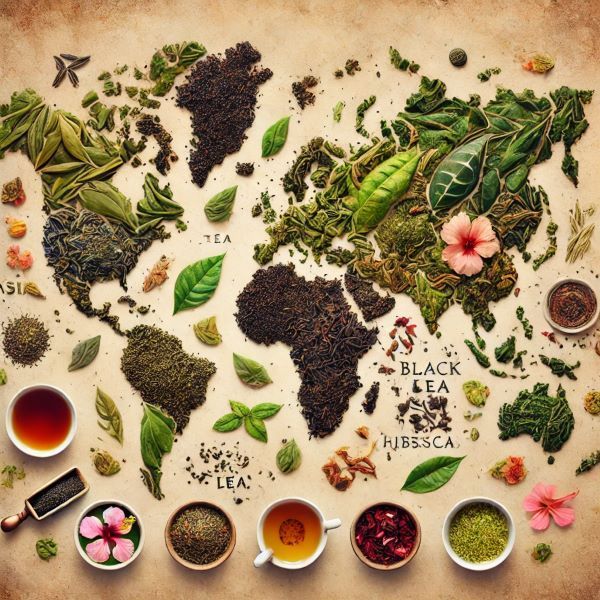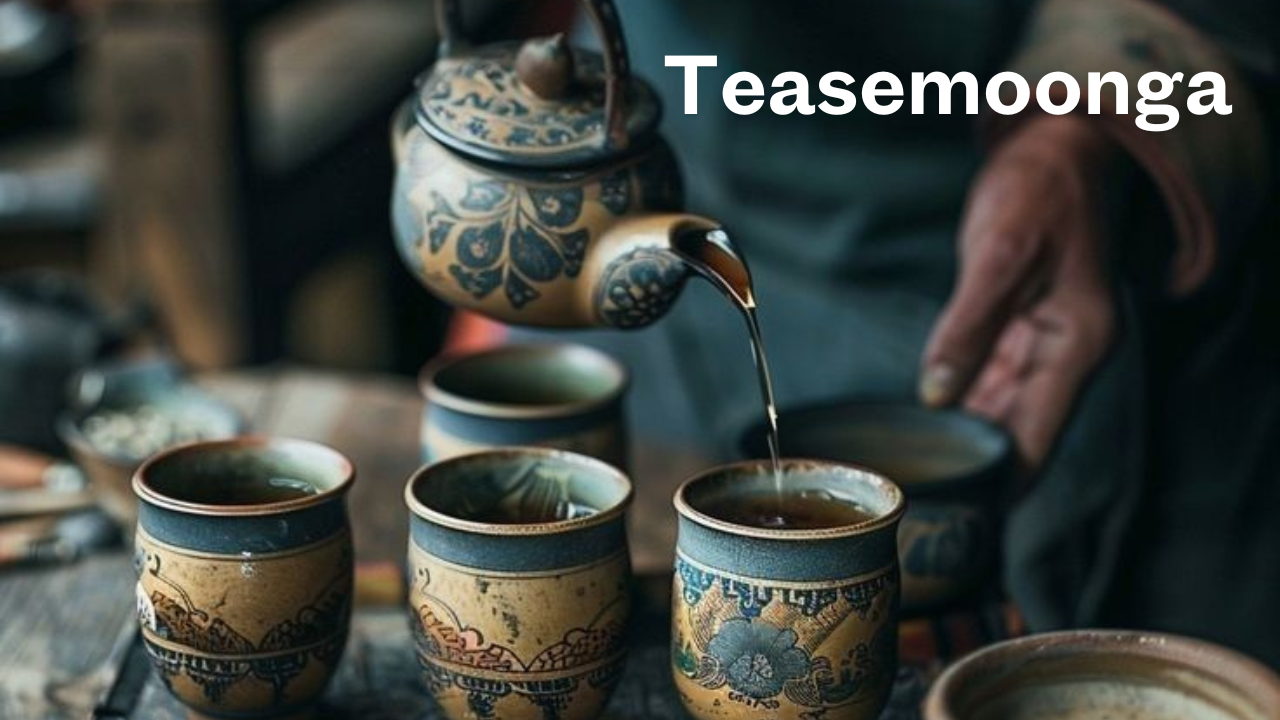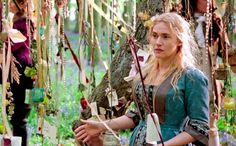Teasemoonga has emerged as a fascinating and enriching subject for tea enthusiasts around the globe. The term refers to a distinctive approach to appreciating, brewing, and sharing tea, which blends traditional practices with modern interpretations. This article delves into the world of Teasemoonga, uncovering its origins, methods, cultural significance, and the health benefits associated with the practice. We’ll also address common questions about this captivating tea culture.
What is Teasemoonga?

Teasemoonga can be described as a lifestyle and philosophy centered around the art of tea. Unlike conventional tea-drinking practices, Teasemoonga emphasizes mindfulness, creativity, and social connection. At its core, it’s about celebrating the intricate flavors and aromas of tea while fostering a deeper appreciation for its origins and cultural heritage.
Key Elements of Teasemoonga
- Mindful Brewing: The brewing process is treated as a meditative ritual, encouraging practitioners to focus on the present moment.
- Cultural Exploration: A strong emphasis is placed on learning about the cultural backgrounds of different teas.
- Community Bonding: Sharing tea becomes a means of connecting with others and building relationships.
- Creative Experimentation: Innovative techniques and unique ingredients are often incorporated to enhance the tea experience.
Origins and Evolution

The origins of Teasemoonga are shrouded in mystery but are believed to have been inspired by ancient tea ceremonies from Asia, particularly China and Japan. Over the years, the practice has evolved to include influences from other parts of the world, blending traditional tea customs with contemporary trends.
Historical Roots
- Chinese Gongfu Tea Ceremony: This intricate brewing method has significantly influenced Teasemoonga, emphasizing precision and elegance.
- Japanese Tea Ceremony (Chanoyu): The Japanese approach to tea, which highlights aesthetics and spiritual connection, has also shaped Teasemoonga’s philosophy.
- Global Fusion: The practice has expanded to incorporate elements from Western tea traditions, such as the British afternoon tea.
Teasemoonga Techniques and Practices
Mastering Teasemoonga involves understanding its unique brewing techniques, selecting high-quality teas, and creating a serene environment for the experience.
Brewing Techniques
- Water Temperature Control: Different types of tea require specific temperatures to bring out their best flavors.
- Time Precision: Steeping times are carefully monitored to avoid over-extraction or under-brewing.
- Multi-Infusion: High-quality teas are often brewed multiple times, with each infusion revealing new layers of flavor.
Tea Selection
- Loose-Leaf Teas: Whole leaves are preferred for their superior quality and flavor.
- Rare Varieties: Teasemoonga enthusiasts often seek out rare and exotic teas, such as Da Hong Pao, Gyokuro, or aged Pu-erh.
Environment Setup
- Aesthetic Ambiance: A tranquil and beautiful setting enhances the tea experience.
- Minimalist Tools: Simple yet elegant teaware, such as clay pots and bamboo utensils, are commonly used.
Cultural Significance
Teasemoonga transcends the act of drinking tea; it represents a way of life that values connection, mindfulness, and cultural respect.
Bridging Cultures
By incorporating tea traditions from various countries, Teasemoonga fosters cross-cultural understanding and appreciation.
Promoting Mindfulness
The practice encourages individuals to slow down, focus on the present, and find joy in the simple act of brewing and drinking tea.
Strengthening Community Bonds
Sharing tea with others creates opportunities for meaningful conversations and deepens relationships.
Health Benefits of Teasemoonga
The physical and mental health benefits of Teasemonga are widely acknowledged, thanks to the high-quality teas used and the mindfulness it promotes.
Physical Health Benefits
- Rich in Antioxidants: Teas such as green and white tea are packed with antioxidants that combat free radicals.
- Improved Digestion: Herbal infusions often aid digestion and reduce bloating.
- Boosted Immunity: Many teas contain compounds that strengthen the immune system.
Mental Health Benefits
- Stress Reduction: The meditative aspects of Teasemonga help lower stress levels.
- Enhanced Focus: Teas like matcha provide a calm alertness, improving concentration.
- Mood Elevation: The communal and sensory pleasures of tea can boost mood and overall well-being.
How to Get Started with Teasemoonga
If you’re intrigued by the concept of Teasemoonga, here’s how you can begin your journey:
Step 1: Choose Your Tea
Start with a small selection of loose-leaf teas. Experiment with different types, such as oolong, green, or herbal teas, to discover your preferences.
Step 2: Gather Basic Tools
Invest in simple teaware, such as a teapot, infuser, and tea cups. Choose items that resonate with your aesthetic taste.
Step 3: Learn Brewing Techniques
Research and practice brewing methods suited to each type of tea. Pay attention to water temperature and steeping times.
Step 4: Create a Tea Ritual
Design a dedicated space for your tea sessions. Incorporate calming elements, such as soft lighting and soothing music.
Step 5: Invite Others
Share your tea experiences with friends and family to create a communal bond.
FAQs About Teasemonga
1. What makes Teasemonga different from other tea traditions?
Teasemoonga blends traditional tea practices with modern mindfulness and creativity, making it a unique and versatile approach to tea appreciation.
2. Do I need expensive teaware to practice Teasemoonga?
Not at all. While elegant teaware can enhance the experience, Teasemonga focuses on the practice and intent rather than material possessions.
3. Can I use tea bags for Teasemonga?
Loose-leaf tea is recommended for its quality and flavor, but beginners can start with tea bags and gradually explore loose-leaf options.
4. Is Teasemoonga tied to a specific culture or religion?
Teasemonga is not bound to any specific culture or religion. It’s an inclusive practice that draws inspiration from various tea traditions worldwide.
5. How much time does a typical Teasemoonga session take?
A session can range from 15 minutes to an hour, depending on your level of involvement and the complexity of the tea you’re brewing.
6. Can children participate in Teasemonga?
Yes, children can enjoy herbal or caffeine-free teas as part of the experience, making it a family-friendly activity.
Conclusion
Teasemoonga is more than just a tea-drinking method; it’s a holistic approach to life that combines mindfulness, creativity, and cultural appreciation. Whether you’re a seasoned tea lover or a curious beginner, exploring Teasemoonga can lead to a deeper connection with yourself, others, and the world of tea. So why not brew a cup, take a deep breath, and embark on this enriching journey today?










